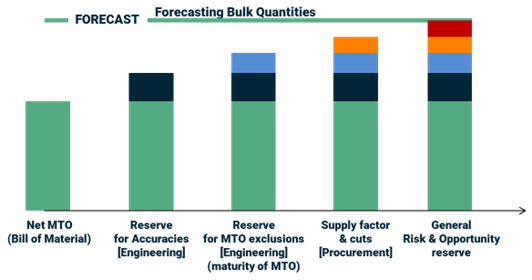On large projects, the documentation provided to support procurement can often be extensive. The large number of documents produced by different originators can sometimes result in contradictory requirements, are often not rationalised, and may become unmanageable by smaller suppliers This is often a blind spot of client organisations that rely on different subject matter experts to provide their requirements. In our new White Paper 2024-02 ‘Why it is Important to Rationalise Procurement Documentation in Large Complex Industrial Projects’, we investigate closer this issue and what can be done to address it.
Documentation sent to prospective and chosen suppliers will generally include a set of general requirements and specifications, and a set of specific requirements and specifications for the product or service being acquired.
Sets of general requirements and specifications can sometimes be extremely extensive, covering many areas starting with safety, quality, general technical specifications, logistics and delivery, etc. The owners of those specifications are internal technical authorities on the various subjects. This set of documents can easily represent thousands of pages, in particular if the client has significant project experience in many different situations. Being general requirements not everything is applicable to the particular case, nevertheless it is often easier for the client organisation to just send over the full body of general documentation. In certain cases, as various sections will have been written by different departments of the client organisation, internal consistency is not assured even within the general specifications.
Specific requirements and specifications will be based on the specific engineering performed by the project. It may complement or even contradict the general specifications. However, for expediency purpose, it will often simply be sent on top of the general documentation, with a statement that in case of contradiction, the specific (or the most stringent) takes precedence. The rationalisation of requirements is left to the supplier, which may not have the resources or capability to do so.
The supplier will therefore receive thousands of pages of general specifications, most of which are not really applicable, and hundreds of pages of specific requirements, some of which may be contradictory and with no clear process for deciding what is really applicable.
Lack of rationalisation of requirements and specifications, combined with their natural inflation over time, is a major impediment to productivity in a world where the number of requirements tends to grow significantly due to regulatory evolution and search for more complicated functionalities. Significant effort has to be taken at organisational and industrial branch level to rationalise them and ensure that they are transferred and understood by suppliers. This is still often a blind spot for many organisations that must be identified and addressed. Discover more in our new White Paper 2024-02 ‘Why it is Important to Rationalise Procurement Documentation in Large Complex Industrial Projects’.
If you can’t access the link to the white paper, copy and paste the following link in your browser: https://www.projectvaluedelivery.com/_library/2024-02_procurement_docs_rationalise_v0.pdf










